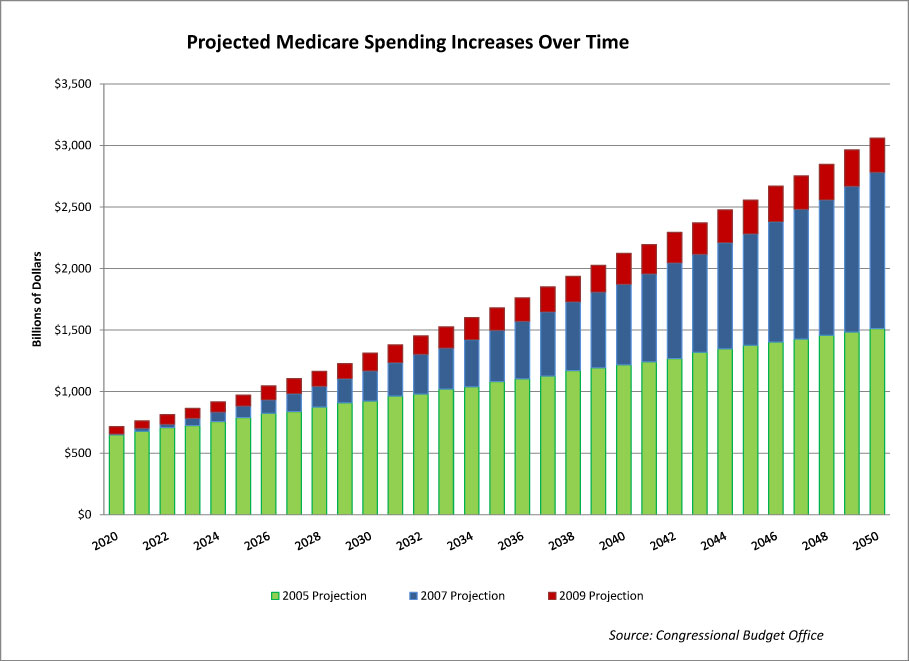The government has been trying to collaborate on a cheaper and more effective healthcare system.
Legislative proposals for the reduction of spending on Medicare are typically presented as price controls, such as putting a ceiling on the maximum amount paid by Medicare on prescription drugs or other medical products and services. While price controls may appear to be logical in theory, it often results to a number of unintended negative effects when put in practice, ultimately leading to more costly provision of health care services, and lower quality of health care. Many experts claim that there are better options for reducing Medicare spending other than price controls while still maintaining the quality of health care and allowing for further advancement.
The government doesn’t look far in seeking ways of slowing down the increase of Medicare costs, as it already has a built-in model for this through Medicare Part D or the drug benefit program enacted in 2003. This particular coverage is ideal for efforts to control costs while protecting beneficiaries and driving innovation. Under Medicare Part D, pharmaceutical companies negotiate with private health insurance companies as they compete for the senior citizen market. Lower Medicare Part D premiums attract more enrollees leading to increased profits for insurance companies and lower cost impact on all taxpayers. As in any business, consumer choice and market competition can keep overall costs low.
The prescription drug coverage for the elderly is government-subsidized, meaning that the lower income elderly pay less, even nothing, for this coverage, while relatively well-off seniors pay a little bit more. Medicare Part D comes with a standard set of coverage that all providers must be able to cover, so that the competition is narrowed down to just the price of this standard plan, and the quality of service the pharmacy-network can provide.
Part D insurance plans can also control costs by pushing for the use of generic drugs. Studies have shown that when there are more affordable alternatives to certain types of medication, the Medicare beneficiary will always go for this alternative. Another study suggests that the government was able to save over $33 billion in 2007 due to the practice of generic drug substitution.
The premium costs for Part D have remained static for some time now, and the Centers for Medicare and Medicaid Services, which maintains oversight functions of this program, has predicted a further decline in premiums in 2014 in anticipation of the decline in drug prices. Surveys conducted by government and independent research agencies report a generally high satisfaction with Medicare Plan D, particularly among seniors who have limited incomes. Most senior citizens claim that their Part D plan is able to cover the drugs they require.
Since Medicare Part D gives emphasis on pricing, it is able to strike the balance between keeping drugs affordable and encouraging investments in innovation. When patent protection for branded medicines expires, the prices of these medicines decline and stay that way. This situation helps Medicare beneficiaries realize more benefits in the long term.
The increased affordability and availability of drugs for chronic ailments has prevented expensive complications. A good example would be the affordable statins that has successfully prevented heart attacks for many beneficiaries. This means that drugs can sometimes replace the more expensive health care services, technology, and labor. That is why it pays to sustain the level of investment going to research and development for diseases like Alzheimer’s disease and diabetes, as they can impose huge costs on patients and the society as a whole. The administration of U.S. President Barack Obama has imposed rebates on drug companies participating in Medicare Part D. These rebates apply to participants who receive Medicare and Medicaid coverage.
There have been calls for improved coordination of the care provided to low income Medicare participants suffering from grave ailments by fixing the fragmented Medicare and Medicaid benefits program. Studies show that participants who are eligible to receive benefits from both Medicare and Medicaid comprise of only 20 percent of the population but they account for over 30 percent of Medicare costs and roughly 39 percent of Medicaid costs. The better coordination of benefits for this small chunk of the Medicare population can result to government savings amounting to $189 billion in the next decade.
There are also some that propose a cap on the rate of federal spending on health care, which includes Medicare and Medicaid, which will in place put pressure on insurance companies to focus more on providing high quality of care to their customers.


